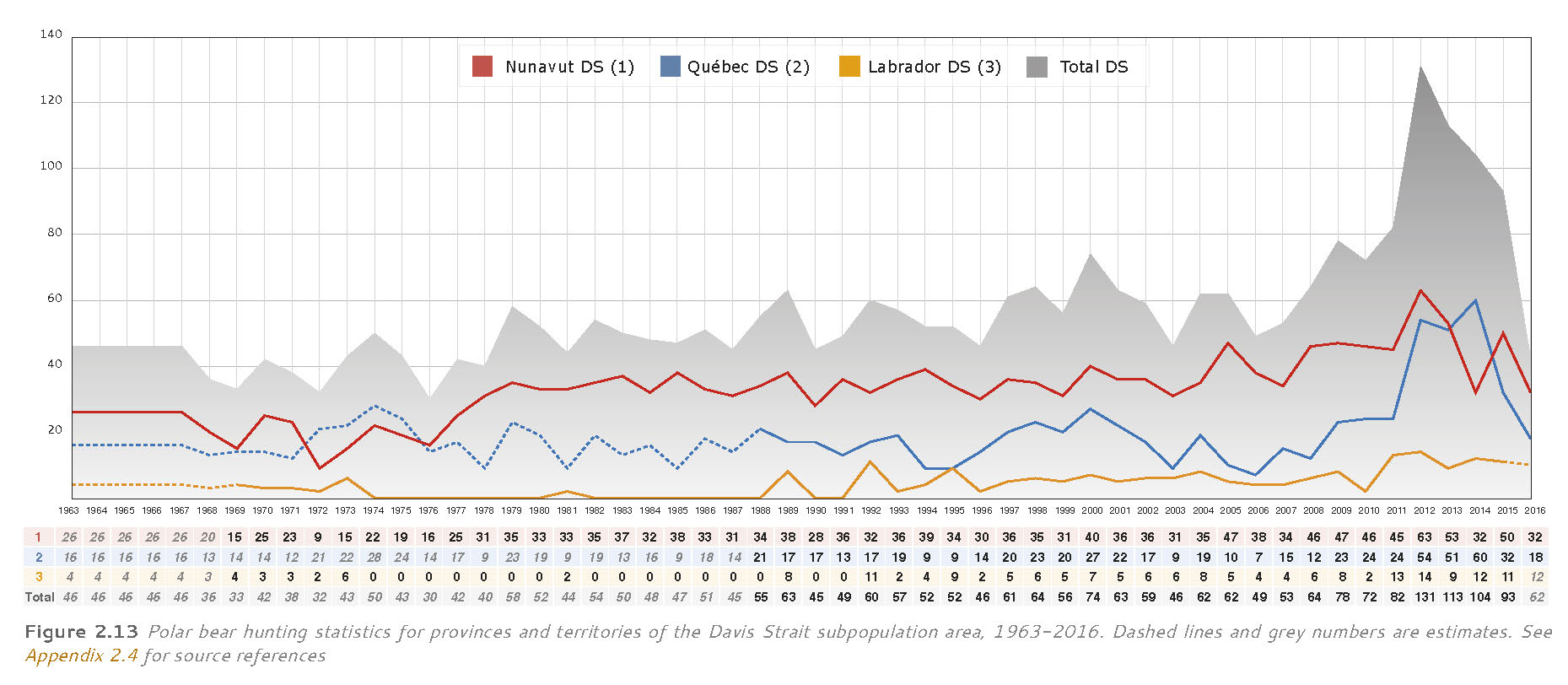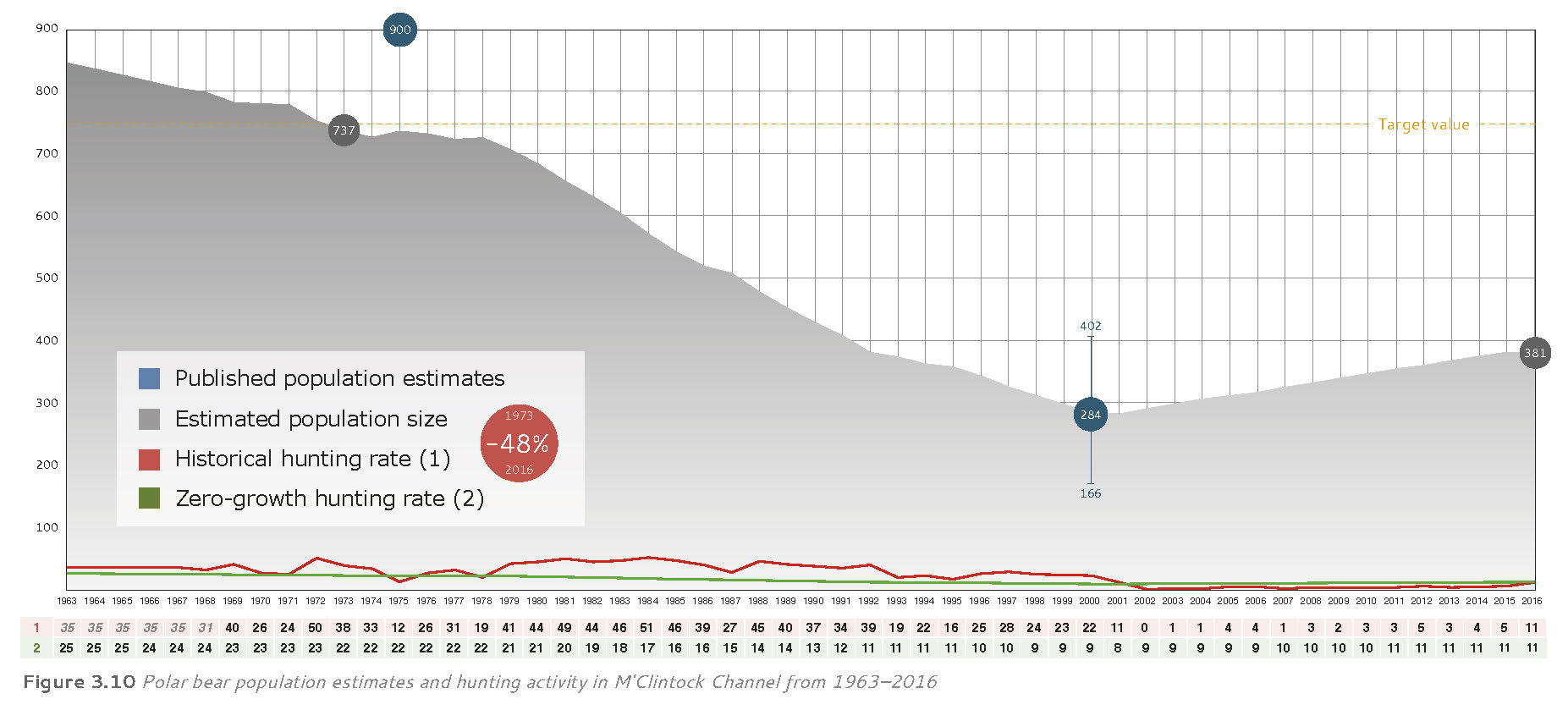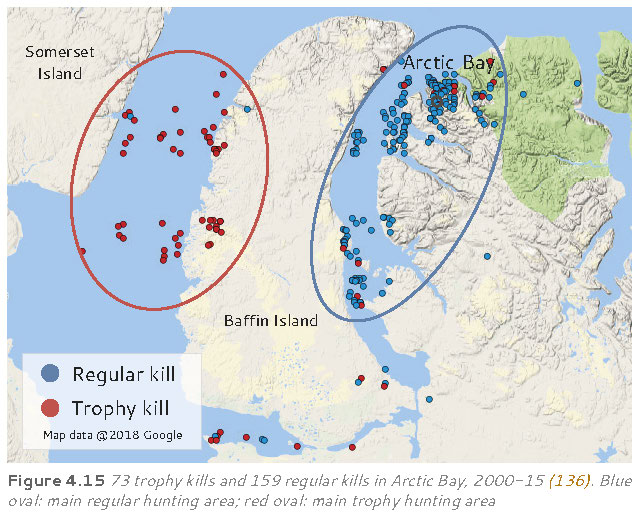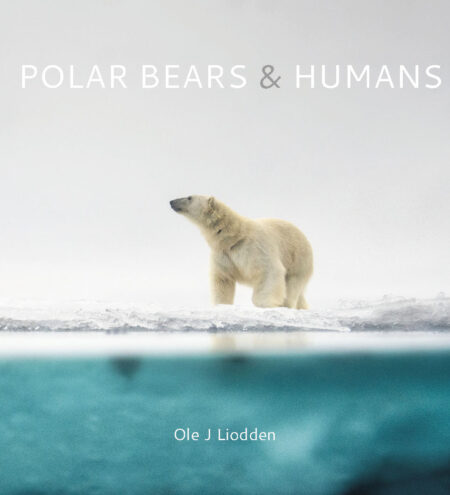Your cart is currently empty!

Polar Bears & Humans – The book
Introduction
[columnize]
Given the real impacts global warming has already imposed on polar bear habitat, most people believe polar bears are protected. If they know polar bear hunting occurs, they believe it is minimal, well managed and careful, a traditional practice followed by only a small number of people indigenous to the Arctic. We tend to believe such hunting is ‘sustainable’ and for ‘subsistence’ purposes, and not a real threat to polar bears. But what does the evidence say? Few authors, researchers or managers have informed the public about the extent and purpose of polar bear hunting, and it is about time we look at the details of what hunted polar bears have endured and currently face. The facts will most likely surprise you!
The Polar Bears & Humans book has six chapters as described below. The main purpose of these chapters is to publish information about polar bear management and hunting statistics that until now has been hidden or difficult to access. The book can be ordered at the bottom of this page.
[/columnize]
1. Living on thin ice
[gap size=”0px”]
Among the main topics of this chapter is an examination of why sea ice is crucial to polar bears and other ice-dependent mammals, and what will likely happen if sea ice continues to retreat. Sea ice is important to the stability of polar regions, enacting global effects on weather systems, oceanic currents and overall temperatures. Overall sea ice extent is one of the main parameters used to measure changes in the Arctic, but it is a somewhat superficial measurement that does not reflect the actual degree or impact of sea ice loss. To more fully understand the loss of sea ice requires information about its thickness and age, but such data are more challenging to acquire.
The warming climate, strongly influenced by human activities and increased global use of non-renewable energy sources, is responsible for Arctic sea ice loss. Polar bears and other sea ice-dependent animals face significant challenges as they are forced to adapt to their receding habitat. One might reasonably wonder, then, how can polar bears adapt to current and possibly long-term climate change, and where will they survive in a warmer Arctic?
Global warming is a potential threat to Arctic species, and polar bears are among the first to experience its adverse effects. Indeed, polar bears are the proverbial canary in the coal mine indicating the health of the Arctic and global ecosystem. If they are struggling, it follows that we humans may be the next to experience problems.
1. Living on thin ice
Among the main topics of this chapter is an examination of why sea ice is crucial to polar bears and other ice-dependent mammals, and what will likely happen if sea ice continues to retreat. Sea ice is important to the stability of polar regions, enacting global effects on weather systems, oceanic currents and overall temperatures. Overall sea ice extent is one of the main parameters used to measure changes in the Arctic, but it is a somewhat superficial measurement that does not reflect the actual degree or impact of sea ice loss. To more fully understand the loss of sea ice requires information about its thickness and age, but such data are more challenging to acquire.
The warming climate, strongly influenced by human activities and increased global use of non-renewable energy sources, is responsible for Arctic sea ice loss. Polar bears and other sea ice-dependent animals face significant challenges as they are forced to adapt to their receding habitat. One might reasonably wonder, then, how can polar bears adapt to current and possibly long-term climate change, and where will they survive in a warmer Arctic?
Global warming is a potential threat to Arctic species, and polar bears are among the first to experience its adverse effects. Indeed, polar bears are the proverbial canary in the coal mine indicating the health of the Arctic and global ecosystem. If they are struggling, it follows that we humans may be the next to experience problems.
2. The history of hunting
[columnize]
Climate change and sea ice loss have dominated discussions about polar bear conservation in recent years. Although a warmer climate may largely determine the future distribution of polar bears, the vast majority of population reductions over the past 30 years are attributable to unsustainable hunting. At least for the next ten to 15 years, hunting will likely continue to play a major role in determining polar bear population trends.
This chapter describes the history of polar bear hunting, dating back to the 1960s for each of the five Arctic countries: the United States (Alaska), Canada, Greenland, Norway (Svalbard) and Russia. Hunting statistics for the Arctic prior to the Agreement on the Conservation of Polar Bears of 1973 show what effect the agreement has actually had.
Killing polar bears directly reduces the number of individuals in the overall population. This impact is measurable and current – not just a potential. That said, most people do not know how many polar bears are actually killed every year, where they are killed, who the hunters are and how hunting activity has changed in the last 40–50 years. These are important questions deserving serious attention, and the answers herein may be surprising.

[/columnize]
3. Population trends
[columnize]
Many people want to know if the overall polar bear population is increasing or decreasing. Climate change and hunting pressure suggest it is reasonable to expect a decreasing population, but by how much? Fortunately, given the available population studies and hunting statistics, this chapter is able to describe population changes since the 1960s.
Polar bear population estimates usually seek to enumerate bears for a specific year or shorter period. But for a rare animal with a low reproductive rate, like the polar bear, the estimation period must be extended to see how its population has changed over the last few decades, not just the last few years. This chapter discusses estimated changes to polar bear subpopulations from 1963–2016 and further describes changes to the overall polar bear population throughout the Arctic.
The chapter ends with a warning about a new trend in polar bear population studies. Some researchers, when estimating population sizes, use statistically hazardous techniques to estimate high numbers of virtual bears that are not supported by field observations. Increasingly, scientists and decision makers are considering such virtual bears acceptable.

4. Trophy hunting
[columnize]
The polar bear is one of the most exclusive species for trophy hunters to pursue. With the proper license, a guide team and the ability to pay lofty expenses, one can legally hunt trophy polar bears in certain areas of Canada. Not many journalists or researchers have documented trophy hunting of polar bears. However, this chapter details the occurrence of trophy hunting in Canadian settlements and in each affected polar bear subpopulation area from 1970–2016. The chapter reveals the frequency of trophy kills and the locations of and motivations for trophy hunting activity. It also examines how many settlements still engage in the trophy hunting industry, and why some communities have succeeded at it, yet others have not.
Many believe polar bear trophy hunting is an important source of income for some Inuit settlements, but what is the actual economic value of the industry? Furthermore, upon evaluating the local benefits from trophy hunting, which settlements – if any – can justify its importance to the community’s income? Are alternative sources of income, like ecotourism, potentially better?
This chapter seeks to answer these questions, as well as identify some of the negative effects of trophy hunting, like reduced genetic diversity and mating success for polar bears, ethical conflicts for humans, and increasing pressure for higher hunting quotas among settlements. Finally, the chapter explores whether it is possible to justify continued ‘conservation hunting’ and ‘sustainable hunting’ by foreign trophy hunters, or whether it is simply time to ban polar bear trophy hunting altogether.

5. ‘Problem bears’
[columnize]
Polar bears are big, strong, intelligent, curious and tolerant of people, but they also pose a potential threat. People inhabiting or visiting the Arctic must know or learn what precautions to take, how to behave when meeting a polar bear and how to deter, rather than provoke, the bear. When unexperienced people have close encounters with polar bears or use the wrong deterrents, the result can be fatal.
This chapter describes the typical ‘problem bear’ – a label used in hunting statistics that is often a misnomer – and what circumstances trigger a bear to become a potential problem for humans. Statistics about ‘problem bears’ are available for most areas of Canada and Svalbard. The numbers illustrate where ‘problem-bear’ encounters are most frequent and which types of people are usually involved in them. Furthermore, some researchers warned about the potential for more ‘problem bears’ in Svalbard, after the polar bear hunting ban of 1973. Forty-five years later, statistics reveal whether Svalbard’s protected polar bear population has actually yielded more ‘problem bears’, or whether the predictions were wrong.
The final point of this chapter is to examine how to reduce ‘problem-bear’ encounters in the future. A warmer Arctic with less sea ice and more starving polar bears means the potential for more serious encounters between polar bears and humans. Is it possible to manage in a way that allows polar bears and humans to live in harmony in the Arctic, or are human-bear encounters doomed to become an increasing problem?
[/columnize]
6. Polar bear skin trade
[columnize]
Humans have targeted polar bears for their rare, high-quality skins for hundreds of years. Today, the pure white hide of a polar bear is a luxury item and its price has increased in the last decade. Higher prices attract more hunters and fur traders who want to earn as much money as possible from vulnerable species like the polar bear.
Traditionally, Inuit hunters used the skin and meat of the polar bears they hunted for subsistence purposes. Nowadays, with the ability to earn more money through the skin trade, Inuit hunters are tempted to engage in commercial hunting practices that target the largest, fittest animals with the best fur quality. Partaking in the skin trade may secure more money for local settlements, but it also causes ecological and genetic challenges for polar bears trying to survive in a warmer Arctic climate.
The increasing demand and higher prices for polar bear skins are about to become serious threats to polar bears by attracting more hunters and illegal organisations into the market. Can trade regulations alone reverse or stop the forces pushing for more polar bear hunting and increased demand? Or, is a complete ban on international trade the only way to protect polar bears?

Order the book
I have tried to make the book as short and too-the-point as possible, but with all the important topics it has become a big book. The book will serve as a reference book for most of you, and the chapters and sections are constructed so it is easy to find what you are looking for without reading the whole book. I have also included 14 pages with bibliography (420 references) where most of them have short weblinks for easy access to more readings or background information.
Some details about the book:
– 355 pages in size 29 x 26 cm
– weight about 2,5kg
– richly illustrated by figures and images
– 14 pages bibliography
– index pages
– active links to references (PDF-version)
[gap size=”20px”]
[button href=”http://oleliodden.com/product/polarbearsandhumans/” shape=”square” size=”mini” float=”none” info=”none” info_place=”top” info_trigger=”hover”]ORDER THE BOOK – PRINTED VERSION[/button][gap size=”20px”]
[button href=”http://oleliodden.com/product/polar-bears-humans-pdf-version/” shape=”square” size=”mini” float=”none” info=”none” info_place=”top” info_trigger=”hover”]ORDER THE BOOK – PDF VERSION[/button]
[gap size=”20px”]
Main Partners
The making of this book was funded by the great support from our Main Partners (listed below) and Private Partners (listed in the book). Thanks a lot for the support!
[gap size=”50px”]
[column type=”1/4″ fade=”true”][content_band style=”color: #777777;” bg_color=”#ffffff” border=”all” inner_container=”true”][image type=”rounded” src=”http://oleliodden.com/wp-content/uploads/2017/07/wpw-3c.jpg” href=”http://wildphotowonders.de” target=”blank” link=”true” alt=”Wild Photo Wonders” info=”none” info_place=”top” info_trigger=”hover”][/content_band][/column]
